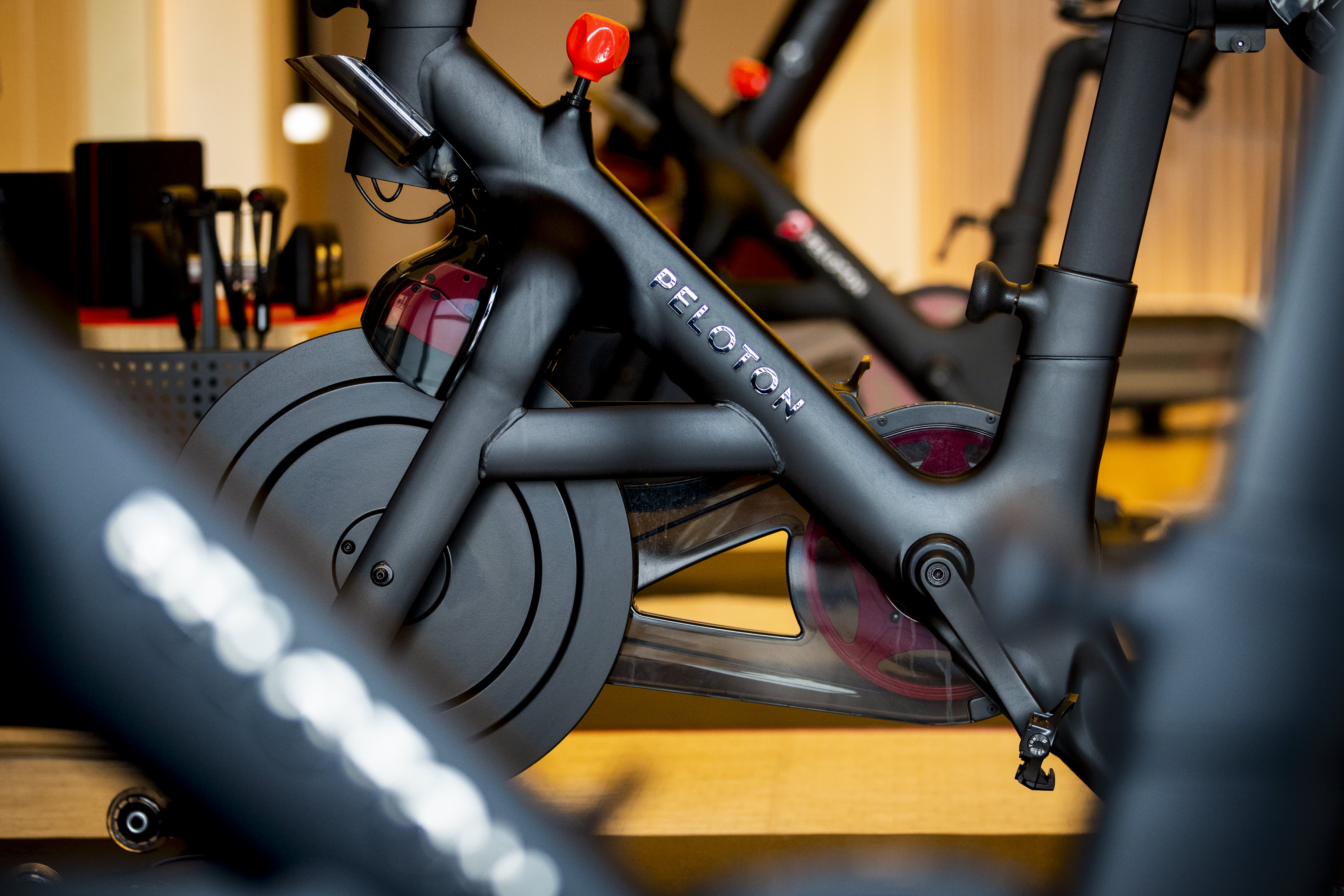
Peloton’s new Chief Executive Barry McCarthy has only been at the helm of the connected fitness company for about a month, but he’s already testing ways to lure new customers and make the business more profitable.
Peloton confirmed to CNBC that on Friday it will start to trial a new pricing system, where customers pay a single monthly fee for both their workout equipment and for access to Peloton’s on-demand fitness classes. Should a user choose to cancel, Peloton would take back the Bike at the cost of an additional delivery fee, the company said.
The test will run for a period of time in Texas, Florida, Minnesota and Denver, for monthly fees ranging between $60 and $100 a month. Customers will only be able to choose this option through Peloton’s brick-and-mortar stores, or its fitness studios, and not online.
Peloton spokeswoman Amelise Lane said that Peloton created the limited-time pilot in select markets in the United States to explore various pricing models and options for new members.
“This aligns with Peloton’s belief that intuition drives testing and data drives decision making as the company sets course for the next phase of its evolution and growth,” Lane said in an emailed statement.
The company is trying to win over skeptical investors. One Wall Street analyst has already questioned whether the new pricing plan could end up weighing on Peloton’s brand and finances. Shares are down about 79% over the past 12 months. In recent weeks, the stock has been trading below its IPO price of $29, and closed Wednesday at $23.44. It was down 3% in early Thursday trade.
Peloton members who also own a piece of the company’s equipment pay a monthly fee of $39 to access workout classes, including cycling, meditation, yoga and running. Digital-only members pay $12.99 per month.
The bigger upfront expense comes with the company’s equipment. Peloton’s original Bike currently costs $1,745, including delivery and setup fees, while its Bike+ retails for $2,495. The company last August had cut the price of its Bike by about 20% to $1,495, not including delivery, hoping to appeal to more consumers with a cheaper option.
McCarthy has already made it very clear, too, that prices could fall further as he aims to grow Peloton’s user base beyond the Covid pandemic.
The former Netflix and Spotify exec, who took over the CEO role from Peloton co-founder John Foley, has been tasked with getting Peloton back to profitability, as the company grapples with waning demand for at-home workout products and heightened supply chain expenses.
“I think there’s enormous opportunity for us to flex the business model and dramatically increase the [total addressable market] for new members by lowering the cost of entry and playing around with the relationship between the monthly recurring revenue and the upfront revenue,” McCarthy said in an interview with CNBC’s Jim Cramer last month.
While the bundled pricing strategy is only a test, and it’s unclear if and when Peloton would incorporate this idea permanently, BMO Capital Markets analyst Simeon Siegel raised questions about the damage it could do to Peloton’s financials and to its brand image.
“For a company that has been plagued with logistic issues, they are now effectively allowing people to return their piece of equipment, at a moment’s notice,” Siegel said. “They’re actually throwing themselves more into the delivery and logistics game. Rather than walking away from it.”
Further, Siegel said Peloton has, to its credit, been able to keep churn rates so low because people don’t want to quit the service once they make such a significant purchase for one of its bikes or treadmill machines. Peloton’s average net monthly connected fitness churn was 0.79% in the latest period.
“But if it becomes easy to cancel, and easy to return, what’s that going to do to churn?” Siegel said. “Does Peloton become a winter experience for customers who every year rent the bike for four months, and then give it back when the weather’s nice? That becomes a very expensive customer.”
One user also asked in a Reddit thread about the pricing test if Peloton would, as a result, change the membership fee for people who already own the company’s equipment.
As of Dec. 31, Peloton counted 2.93 million connected fitness subscribers. It has more than 6.6 million total members, including those people who only pay for access to its workout classes.
In another bid to win customers, Peloton recently extended its free at-home trial for its Bike, Bike+ and Tread machines to 100 days from 30.
The company has also has new cardio products on the way, including a strength training device called Peloton Guide and a rowing machine. By manufacturing a suite of connected fitness options, Peloton aims to be a tougher competitor with rivals such as Hydrow, Tonal and Lululemon‘s Mirror. Its hope it that people who already own a Bike or a Tread will buy more stuff within the Peloton ecosystem, including its own apparel.
When McCarthy took over as CEO, he wrote in a memo to employees that Peloton had to find ways to drive growth. “And that will require us to take risks, to be willing to fail quickly, to learn quickly, to adapt and evolve quickly, rinse and repeat,” he said.
The Wall Street Journal first reported on the pricing tests.




